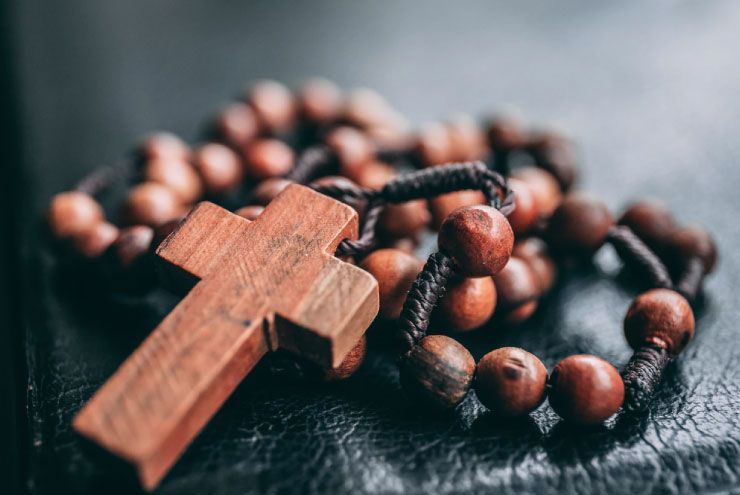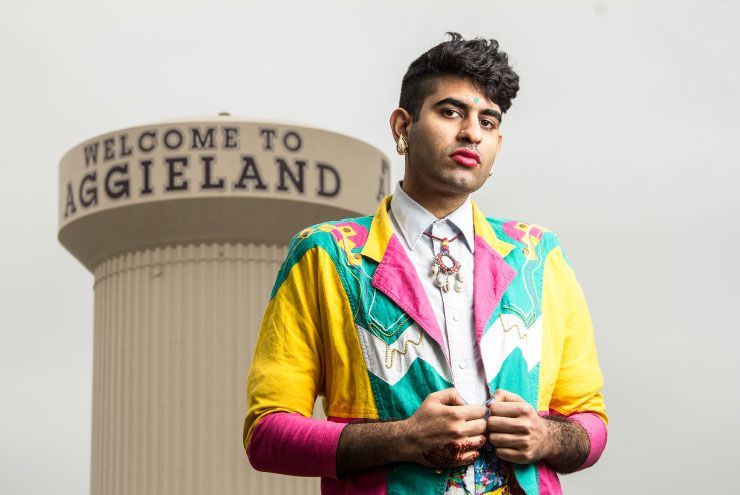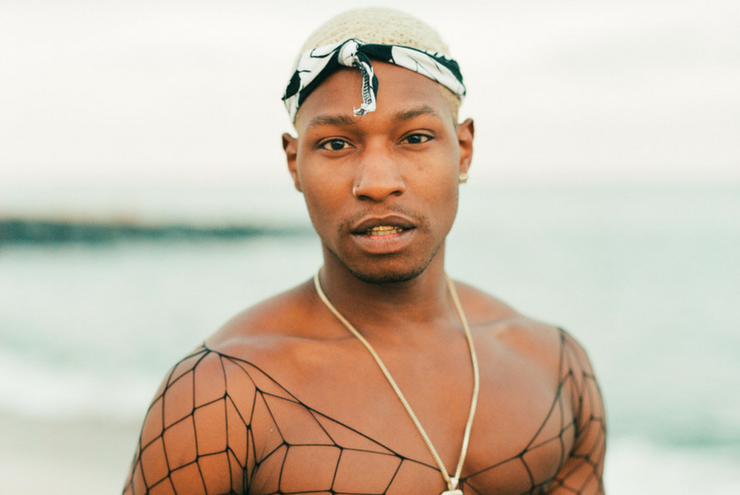By Nikita Shepard
Over the past 50 years, as conflicts over homosexuality have wracked religious denominations across the United States, LGBTQ people have both fought for affirming inclusion within their faith communities and formed distinct groups of their own. When most folks today think about early LGBTQ religious activism, Reverend Troy Perry and the Metropolitan Community Church (MCC) spring easily to mind. Perry, a southerner by birth who grew up in northern Florida and was first licensed as a Baptist preacher there at age 15, founded the first MCC congregation in 1968, originally meeting in the living room of his Los Angeles home. Others may think of the Council on Religion and the Homosexual, founded in 1964 in San Francisco, or denominational groups like Dignity, founded as a rap group for gay Catholics in San Diego in 1969. While these examples form an important part of this history, they reinforce the perception that LGBTQ religious activism emerged from liberal urban enclaves in California and arose around the time that gay liberation, helped along by anti-war and countercultural movements, was taking off in the United States.
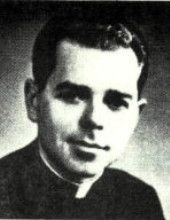
“Our job as religious [leaders] was to help to draw people into the body of Christ, not to chase them out.” -Rev. George Hyde
The curious story of Reverend George Hyde’s ministry to the gay community in 1940s Georgia turns much conventional wisdom on its head. Religious communities, and in particular those in the South, bear the reputation of being especially inhospitable to queer folks. And even those of us who know a thing or two about queer history tend to think that no openly gay-affirming institutions beyond dingy bars existed in the US prior to the 1950s and the emergence of “homophile” (early gay and lesbian rights) activism with the Mattachine Society in California. However, these assumptions overlook the quiet determination of Black and white gay men and lesbians from the Eucharistic Catholic Church who insisted on making a place for themselves in the Jim Crow South of the 1940s to meet, discuss, and worship in defiance of the racism and homophobia that structured their lives. The story that follows traces an under-appreciated piece of our southern queer legacy, including what were likely the first acts of pro-gay civil disobedience in US history, and urges us to rethink what we thought we knew about Christianity, the South, and gay people decades before Stonewall.
George Augustine Hyde was born in Chattanooga, Tennessee in 1923. As a child, he moved to Atlanta with his family and grew up there through his high school years. Although he grew up attending a Southern Baptist church, through independent reading, he first became interested in and then passionate about Catholicism. Through the sponsorship of Atlanta’s Bishop Gerald O’Hara, who befriended the precocious young man, Hyde enrolled in the St. Mary’s of the Barrens seminary in Perryville, Missouri with the intention of becoming a priest.
He didn’t last long at St. Mary’s, however. Although he was, as he later recalled, “just a little Georgia boy,” and quite naïve and innocent about sexual matters, he found himself outraged at the hypocrisy he encountered when boys were routinely dismissed when suspected of same-sex intimacies, while the church and seminary faculty included bona fide fornicators and adulterers whose (heterosexual) indiscretions were tacitly tolerated. When he criticized the institution and decided to leave, he found himself the target of gossip and empty accusations, which prompted him to launch into his own “little Martin Luther speech”:
“I cut loose and told them that they were hypocrites and that they were traumatizing innocent people. That our job as religious [leaders] was to help to draw people into the body of Christ, not to chase them out. And they were building closets in every corner of the church, shutting people away from the altar.”
By the time he had finished ranting and returned to his room, he found his suitcase preemptively packed and a train ticket out of town.
Cut loose from the seminary life, Hyde tried his hand at working at a St. Louis department store, until a negative reference from his former teachers cost him his job. He returned to Atlanta in 1945, still passionate about the religious life, but frustrated by what he saw as the church’s un-Christian treatment of gay men and lesbians. As he pondered his next move, he took a job as a music teacher with the Atlanta public school system. At the school where he was assigned, he encountered Bishop John Kazantkis, who was serving as a Greek language teacher. Kazantkis had recently emigrated from Greece, where he had been suspended from his bishopric after defending priests defrocked on charges of homosexuality, as well as declaring his own same-sex loving orientation. Together, Hyde and Kazantkis would respond to a situation of homophobia in the church by helping to form what may have been the first explicitly gay-affirmative religious congregations in the history of the United States.
In early 1946, an incident took place at the Sacred Heart Roman Catholic Church in downtown Atlanta that would catalyze an unprecedented form of religious activism and outreach. As Hyde recalled, the trouble began when a young gay man at confession admitted his sexual experiences with another man, but refused to acknowledge them as morally wrong. The outraged priest, insisting that he admit his behavior to be an abomination, denied the young man communion the following Sunday. Again the next week, the man came up to receive communion and waited, only to have the priest walk right past him, leaving him standing alone at the front of the church. Tongues began to wag across the parish, and when Hyde heard about the man’s lonely ordeal, he responded:
“Of course, it spurred me into action. I had to go down and defend him. So through some priest friends at Sacred Heart, I found out who it was and I contacted him. So being the fool I was at the age of 20, I said, ‘Listen. Next Sunday, I will go stand with you at the communion rail. They won’t dare pass you by if I’m with you.’ I thought. Passed by both of us. So we stood there till the Mass was over. Some people said we made complete fools out of ourselves. But we made a statement.”
In the face of this protest, the recalcitrant priest threatened to call the police—which only stiffened Hyde’s resolve. He returned to the church the following weekend and again stood by the young man, and this time was joined by two other parishioners, and then another. After five weeks, a total of eight people were participating in the silent Sunday communion protest. That spring, a group of around 20 sympathetic Catholics from Sacred Heart, both gay and straight, began to meet in an informal discussion group. Something had been set in motion that would grow into an unprecedented experiment in religious community across lines of difference. These humble but defiant acts of support for gay people at the Sacred Heart Church in Atlanta may mark the first civil disobedience against homophobia in the history of the United States.
The participants in the discussion group decided to form their own church, at which everyone—Black and white, gay and straight, Catholic and Protestant—would be welcome. Kazantkis, the suspended Greek Orthodox bishop, declined to minister to the new congregation himself but agreed to ordain Hyde to serve as the group’s priest. On Christmas Eve 1946, with funding from the management of a local gay bar, the new congregation—christened the Eucharistic Catholic Church—convened in a hotel meeting room and performed their first liturgy. The meeting attracted hostile attention, and some of the churchgoers were pelted with stones as they left the service. As Hyde pointed out, it was not just the fact that the congregation included openly gay members, but that they met as a racially integrated group in the Jim Crow South, that made them the target of local wrath.
Yet, despite the negative reactions, the congregation flourished. Through the late 1940s, Hyde and Kazantkis expanded their outreach to the gay community around Georgia, forming religious meetings in Macon, Savannah, Athens, and other small towns. The gay community in Georgia at the time, Hyde recalled:
“…was a population of traumatized people. They had gone to church since kids, little kids, and been told from the pulpit, ‘You people are no good.’ They knew their feelings, so they said, ‘They’re talking about me.’ They were so afraid of being discovered that they had no confidence in themselves. I was disturbed because I think the church was guilty of this. The church was hypocritical.”
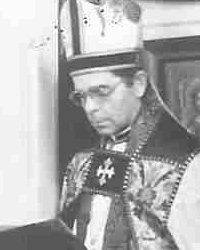
Rev. George Hyde believed that the anti-gay bigotry of most religious congregations interfered with their ability to effectively minister to their own members.
The passionate seminary dropout and the suspended Greek bishop labored tirelessly to create religious spaces where people could worship together across lines of sexual orientation and race. The idea was never, Hyde insists, to form an identity-based, exclusively gay denomination; he believed the focus should be on spirituality, rather than sexuality, and that the anti-gay bigotry of most religious congregations interfered with their ability to effectively minister to their own members.
Hyde moved to Washington, DC in the 1950s, where he helped lead an innovative “worker priest” movement and continued his gay-affirmative ministry. After being ordained as a bishop and participating in a variety of religious initiatives, he eventually returned to the South, leading a variety of small congregations in South Carolina and Georgia, before retiring in Florida, where he died in 2010. His self-effacing manner and distinctive, often schismatic brand of alternative Catholicism never attracted the attention of the vocally activist and charismatic Congregationalist style of worship embodied by Troy Perry and the MCC. And, as so many of us southerners know, our region rarely figures prominently in conventional histories of LGBTQ life and politics, which center on the cities of the Northeast and the West Coast.
Yet, as we marvel at the changes that queer communities have experienced in the South in the past decades, and the freedom many of us feel to live our lives openly in ways previous generations could not have dreamed possible, let’s not forget some of the first steps that paved the way for us. That a 23-year-old seminary dropout and music teacher could defy the racial, sexual, and religious strictures of his society and convene a spiritual refuge against racism and homophobia in the heart of the Jim Crow South—nearly 75 years ago—testifies to the long lineage of courage and determination of our southern queer communities.
This article draws heavily on an oral history interview with Bishop George Hyde conducted in 2004 by J. Gordon Melton, available to read as a transcript and to listen to in streaming audio. Other sources include the LGBTQ Religious Archives Network’s biography of Hyde, the LGBTQ Archive entry on Gay and Lesbian Churches and Synagogues by Jeffrey P. Dennis, the Eucharistic Catholic Church’s website, and Matt and Andrej Koymasky’s biography page.


